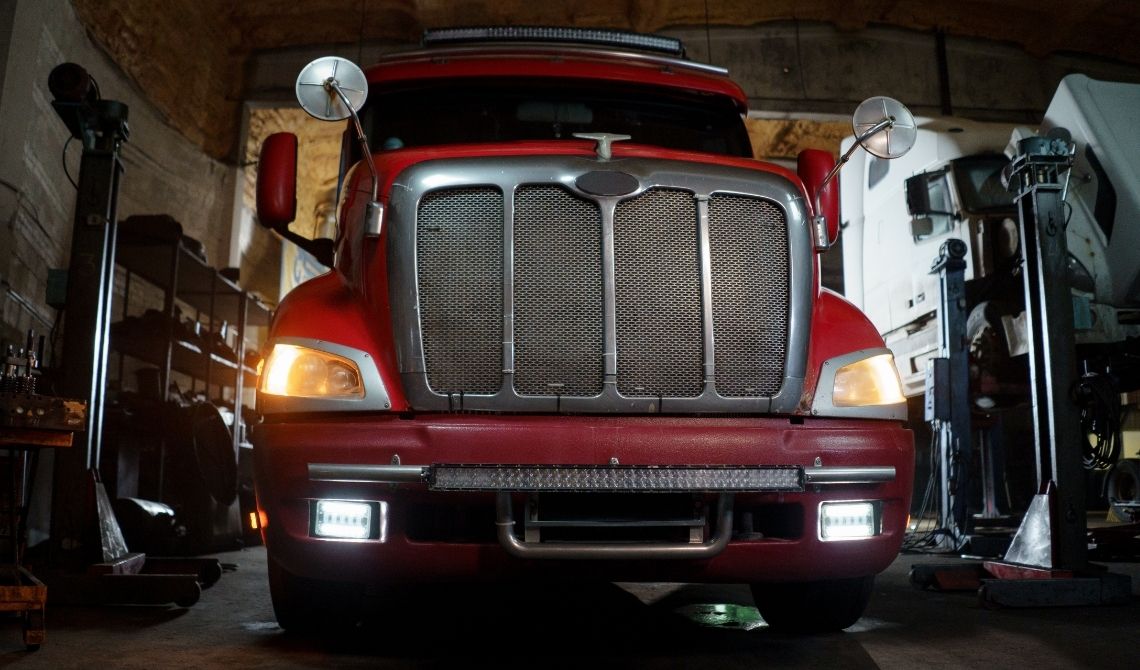Shine Bright The Complete Guide to Truck Headlights
Understanding Truck Headlights
Truck headlights are not just accessories; they are essential components ensuring safety and visibility on the road. Understanding the intricacies of these vital elements is crucial for every driver. In this chapter, we’ll delve into the fundamentals of truck headlights, shedding light on their various types and functionalities.
Firstly, we’ll explore the common types of headlights found in trucks. Traditional halogen headlights have long been a standard choice, known for their affordability and reliability. However, advancements in technology have introduced alternatives such as LED and HID headlights, offering superior brightness and energy efficiency.
Next, we’ll discuss the importance of choosing the right headlights for your truck. Factors such as driving conditions, visibility requirements, and budget constraints play a significant role in this decision-making process. By understanding the features and benefits of each type, drivers can make informed choices that suit their specific needs.
Additionally, we’ll touch upon the role of headlights in ensuring road safety. Properly functioning headlights not only illuminate the driver’s path but also make the vehicle more visible to other road users, reducing the risk of accidents, especially in low-light conditions or adverse weather.
By the end of this chapter, readers will have a solid understanding of the different types of truck headlights available and their respective advantages. Armed with this knowledge, drivers can make educated decisions when it comes to selecting, maintaining, and upgrading their truck’s headlights, ultimately enhancing safety and visibility on the road.
Importance of Proper Headlight Maintenance
Maintaining truck headlights in optimal condition is not just a matter of aesthetics; it’s a crucial aspect of road safety. In this chapter, we’ll explore why proper headlight maintenance is essential for every truck driver.
Firstly, we’ll discuss the direct impact of neglected headlights on visibility. Over time, headlights can accumulate dirt, grime, and other contaminants, which can significantly reduce their brightness and effectiveness. This decrease in visibility not only compromises the driver’s ability to see the road ahead but also makes the vehicle less conspicuous to other drivers.
Furthermore, we’ll delve into the importance of regular inspection and cleaning of headlights. Simple tasks such as wiping the lenses and ensuring proper alignment can go a long way in maintaining optimal visibility. Additionally, we’ll highlight the significance of checking for any signs of damage or wear, such as cracked lenses or burnt-out bulbs, and addressing them promptly to prevent further deterioration.
Another aspect we’ll cover is the role of proper headlight maintenance in ensuring compliance with road regulations. Many jurisdictions have specific requirements regarding headlight brightness, beam pattern, and functionality. Failure to adhere to these regulations not only poses a safety risk but can also result in legal repercussions for drivers.
By the end of this chapter, readers will understand the importance of prioritizing proper headlight maintenance as part of their regular vehicle care routine. From ensuring optimal visibility on the road to staying compliant with regulations, maintaining truck headlights in top condition is essential for safe and responsible driving.
Upgrading to LED Headlights
In this chapter, we’ll explore the benefits and considerations associated with upgrading truck headlights to LED technology. LED headlights have gained popularity in recent years for their superior performance and efficiency compared to traditional halogen bulbs.
Firstly, we’ll discuss the primary advantage of LED headlights: brightness. LED lights produce a more intense and focused beam, illuminating the road ahead with greater clarity and visibility. This enhanced brightness not only improves the driver’s ability to see obstacles and hazards but also enhances the vehicle’s visibility to other road users.
Additionally, we’ll delve into the energy efficiency of LED headlights. LED technology consumes significantly less power than halogen bulbs, resulting in lower fuel consumption and reduced strain on the vehicle’s electrical system. This not only translates to cost savings for drivers but also contributes to environmental sustainability by reducing carbon emissions.
Furthermore, we’ll highlight the longevity of LED headlights. LED bulbs have a much longer lifespan compared to halogen bulbs, lasting tens of thousands of hours before needing replacement. This means drivers can enjoy prolonged use without the hassle and expense of frequent bulb changes, enhancing convenience and peace of mind.
Lastly, we’ll address the practical considerations of upgrading to LED headlights, such as compatibility with existing fixtures and installation requirements. While the initial cost of LED headlights may be higher than traditional bulbs, the long-term benefits in terms of performance, efficiency, and durability often outweigh the upfront investment.
By the end of this chapter, readers will have a comprehensive understanding of the advantages of upgrading to LED headlights and can make informed decisions about enhancing their truck’s lighting system.
Adjusting Headlight Alignment
Proper headlight alignment is crucial for maximizing visibility on the road while minimizing glare for other drivers. In this chapter, we’ll discuss the importance of correctly aligning truck headlights and provide step-by-step instructions for adjustment.
Firstly, we’ll highlight the significance of proper alignment in ensuring optimal visibility. Misaligned headlights can result in uneven illumination, reducing the driver’s ability to see obstacles and hazards clearly. Moreover, misaligned headlights can cause glare for oncoming drivers, posing a safety risk for everyone on the road.
Next, we’ll outline the steps involved in adjusting headlight alignment. This typically involves positioning the vehicle on a level surface facing a wall or garage door, marking the horizontal and vertical centerlines of each headlight beam, and adjusting the aim using the adjustment screws located on the headlight housing.
We’ll provide detailed instructions for both horizontal and vertical adjustments, emphasizing the importance of making incremental changes and testing the headlights afterward to ensure proper alignment.
Additionally, we’ll discuss common signs of misaligned headlights, such as headlights pointing too high or too low, or uneven illumination patterns. By recognizing these signs, drivers can take proactive steps to correct alignment issues and improve overall visibility on the road.
By the end of this chapter, readers will have the knowledge and skills to adjust their truck’s headlight alignment effectively. By ensuring proper alignment, drivers can enhance safety and visibility on the road for themselves and other road users.
Understanding Headlight Regulations
In this chapter, we’ll explore the legal requirements and regulations governing truck headlights. Understanding these regulations is essential for ensuring compliance and promoting road safety.
Firstly, we’ll discuss the importance of headlight regulations in maintaining safe driving conditions. Regulations regarding headlight brightness, beam pattern, and color temperature are designed to ensure that vehicles are equipped with lighting systems that provide adequate visibility without causing glare or distraction to other drivers.
Next, we’ll delve into the specifics of headlight regulations in different jurisdictions. While many regulations are standardized across regions, there may be variations in certain requirements or specifications. We’ll provide general guidelines and recommend that drivers familiarize themselves with the specific regulations applicable to their location.
We’ll also discuss the role of vehicle inspections and enforcement agencies in ensuring compliance with headlight regulations. Regular inspections help identify vehicles with non-compliant lighting systems, allowing authorities to take appropriate measures to address any issues and uphold safety standards.
Furthermore, we’ll address common misconceptions or myths surrounding headlight regulations. Clarifying these misconceptions can help drivers better understand their obligations and responsibilities regarding their vehicle’s lighting system.
By the end of this chapter, readers will have a comprehensive understanding of the regulations governing truck headlights and the importance of compliance. By adhering to these regulations, drivers can contribute to safer roads and reduce the risk of accidents caused by inadequate or non-compliant lighting systems.
Dealing with Headlight Issues on the Road
In this chapter, we’ll address common headlight issues that truck drivers may encounter while on the road and provide practical solutions for resolving them.
Firstly, we’ll discuss the importance of promptly addressing headlight issues to maintain visibility and safety while driving. Issues such as burnt-out bulbs, electrical problems, or foggy lenses can significantly impair a driver’s ability to see the road ahead and be seen by other motorists.
Next, we’ll provide troubleshooting tips for identifying the root cause of headlight problems. This may involve checking for loose connections, inspecting the condition of the bulbs and wiring, and examining the headlight lenses for any signs of damage or obstruction.
We’ll also discuss temporary solutions that drivers can implement to address headlight issues while on the road. These may include carrying spare bulbs and basic tools for quick replacements, using temporary fixes such as tape or adhesive to secure loose components, or adjusting driving behavior to compensate for reduced visibility.
Furthermore, we’ll highlight the importance of regular headlight maintenance and inspections to prevent issues from occurring in the first place. By incorporating routine checks into their vehicle maintenance routine, drivers can identify and address potential problems before they escalate into more significant issues.
By the end of this chapter, readers will have a better understanding of how to deal with common headlight issues while on the road and the importance of proactive maintenance in preventing such issues from occurring. Armed with this knowledge, drivers can ensure that their headlights remain in optimal condition, enhancing safety for themselves and other road users.
Enhancing Visibility with Auxiliary Lighting
In this chapter, we’ll explore the benefits of incorporating auxiliary lighting options into your truck’s setup to enhance visibility in various driving conditions.
Firstly, we’ll discuss the different types of auxiliary lights commonly used in trucks, including fog lights, driving lights, and light bars. Each type of auxiliary light serves a specific purpose, whether it’s improving visibility in foggy conditions, extending the range of illumination during nighttime driving, or enhancing overall visibility in off-road environments.
Next, we’ll delve into the advantages of auxiliary lighting. These lights can significantly improve a driver’s ability to see and be seen on the road, reducing the risk of accidents, especially in low-visibility conditions such as fog, rain, or snow. Additionally, auxiliary lights can enhance the aesthetics of a truck and provide added versatility for different driving scenarios.
We’ll also provide tips for selecting and installing auxiliary lights, including considerations such as beam pattern, brightness, and mounting options. Proper installation is crucial to ensure optimal performance and compliance with regulations governing auxiliary lighting usage.
Furthermore, we’ll discuss the role of auxiliary lights in complementing the truck’s primary headlights. While auxiliary lights can enhance visibility, they should be used judiciously to avoid causing glare or distraction to other drivers.
By the end of this chapter, readers will have a comprehensive understanding of the benefits and considerations associated with incorporating auxiliary lighting into their truck’s setup. Whether for improved safety, functionality, or aesthetics, auxiliary lights can be valuable additions to any truck, enhancing visibility and driving experience on the road.
Conclusion: Safely Navigating the Roads Ahead
In this final chapter, we’ll recap the key insights and recommendations discussed throughout this guide to truck headlights.
Firstly, we’ll emphasize the importance of prioritizing proper headlight maintenance to ensure optimal visibility and safety on the road. Regular cleaning, inspection, and alignment adjustments are essential tasks that every truck driver should incorporate into their vehicle maintenance routine.
Next, we’ll revisit the benefits of upgrading to modern headlight technologies such as LED lights. Enhanced brightness, energy efficiency, and longevity make LED headlights a worthwhile investment for improving visibility and reducing the risk of accidents.
We’ll also reiterate the significance of understanding and complying with headlight regulations to avoid legal issues and promote road safety. Familiarizing oneself with the specific requirements applicable to their location can help drivers ensure that their vehicle’s lighting system meets the necessary standards.
Furthermore, we’ll emphasize the importance of addressing headlight issues promptly and proactively. Whether it’s replacing a burnt-out bulb, adjusting alignment, or installing auxiliary lighting, taking action to maintain optimal visibility is crucial for safe driving.
Lastly, we’ll encourage readers to stay informed and proactive about their truck’s lighting system. By staying updated on advancements in headlight technology, regulations, and maintenance best practices, drivers can ensure that their headlights continue to serve them effectively on the road.
In conclusion, by prioritizing proper headlight maintenance, upgrading to modern technologies, understanding and complying with regulations, addressing issues promptly, and staying informed, drivers can safely navigate the roads ahead with confidence and peace of mind.
For detailed information, you can contact us at Truck Headlights.


